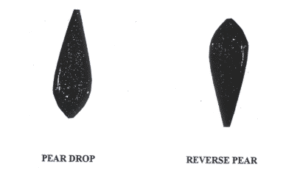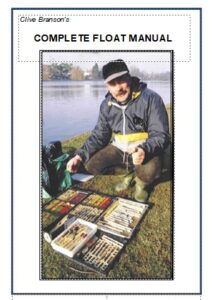🪶 Introduction to Pole Floats
To understand the importance of pole floats, we must first go back to the basics.
Pole fishing has been part of the British angling scene for decades, but it was during the 1981 World Championships on the Warwickshire Avon at Luddington that British anglers truly realised the potential of pole fishing.
That year, France won the event fishing the pole, proving beyond doubt that this method could outfish both waggler and stick float techniques. At the time, France, Italy, Belgium, and Holland were leading the way internationally, dominating the world stage with their advanced pole fishing methods.
England quickly understood that to remain competitive, they too would need to master these highly effective techniques. I was fortunate to be among the first anglers to witness — and learn from — this early evolution of pole fishing, from its conception to its refinement in international competition.
🪝 A Turning Point in Match Fishing
More than 35 years ago, I wrote an article for one of the weekly angling papers after a memorable day on the Warwickshire Avon with top river angler Chris Taylor from the West Midlands. Chris fished the waggler; I fished the pole.
By the end of the session, I’d put together a solid double-figure bag of chub, controlling the float precisely through the swim. Kevin Wilmot, the feature writer, watched as the pole proved its worth. I told him then:
“One day, matches will be won with the pole.”
At the time, that seemed a bold statement. Today, it’s simply the truth — pole fishing wins matches every week on both natural venues and commercial fisheries.
🧭 Pole Float Design and Function
Pole floats are engineered to give the angler maximum control over bait presentation. Their aerodynamic shapes are designed to perform with equal efficiency in still or moving water. This makes them highly sensitive, allowing even the lightest bite to register clearly.
At the heart of pole float design are two classic shapes:
-
Drop Pear — ideal for still water
-
Reverse Pear — perfect for flowing water
Over the years, countless variations have been developed from these two fundamental forms. A skilled angler can adapt either design to different conditions with the right technique and shotting.
🪶 Still Water vs River Pole Floats
Still-water pole floats have evolved very differently from river floats.
-
The classic pear drop (or teardrop) shape features a gently tapered body. As the float is shotted down, its sensitivity increases, while the broad base gives superb balance and stability. Nearly all modern still-water pole floats stem from this elegant and efficient design.
River floats, by contrast, often use a reverse pear shape. The bulkier shoulder helps the float hold steady in the flow. Overshotting the float allows the angler to regulate the speed through the swim, perfectly matching the current — a vital skill when fishing for wary river fish.
Basic Body Types
(See Diagrams below)
.
🇫🇷 Continental Influence
I’ve always believed that the French are among the finest still-water pole anglers in the world. Their innovation in float design has inspired not just me but many great anglers across Britain and beyond.
My own transition from traditional British float fishing to continental pole methods came naturally. As the first World Champion to win using the British waggler, I was fortunate to make international connections, exchanging knowledge and testing a wide range of pole floats.
One small but powerful refinement I’ve used for years is colour camouflage. By painting the base of my floats white, I reduce the shadow cast over feeding fish — a subtle but effective edge when targeting cautious species in clear water.
🧪 Modern Pole Float Materials
Pole float design has evolved dramatically. The use of advanced materials such as:
-
Carbon
-
Glass
-
Polystyrene
-
Balsa
-
Wire
-
Nylon
-
Tungsten
-
and other modern composites have pushed float performance into the 21st century. Today’s pole floats are lighter, stronger, more sensitive, and more durable than ever before.
📜 Pole Float Types
Within the Gold Medal Floats website & Book, you’ll find a wide range of pole float patterns — each with a specific purpose and performance advantage:
Click on the links below to access each float page
POLE FLOAT CONVERSION GUIDE

Now Available: The Complete Float Manual. Over 169 pages of content
Click on Book to order
📘 Download the Complete Float Manual – Instant Access
Bring decades of float-fishing knowledge straight to your screen.
Written by World Champion Clive Branson, The Complete Float Manual is a 167+ page eBook packed with practical techniques, classic float designs, diagrams, and championship-winning methods.
✅ Learn how to use wagglers, stick floats, pole floats and more
✅ Discover the history and evolution of float fishing
✅ Get pro tips and tactics used at the highest level
✅ Ideal for beginners and experienced match anglers alike
💻 Instant Download (PDF) — no waiting, no shipping
💳 Secure checkout with PayPal
👉 Order now and start reading within minutes.
